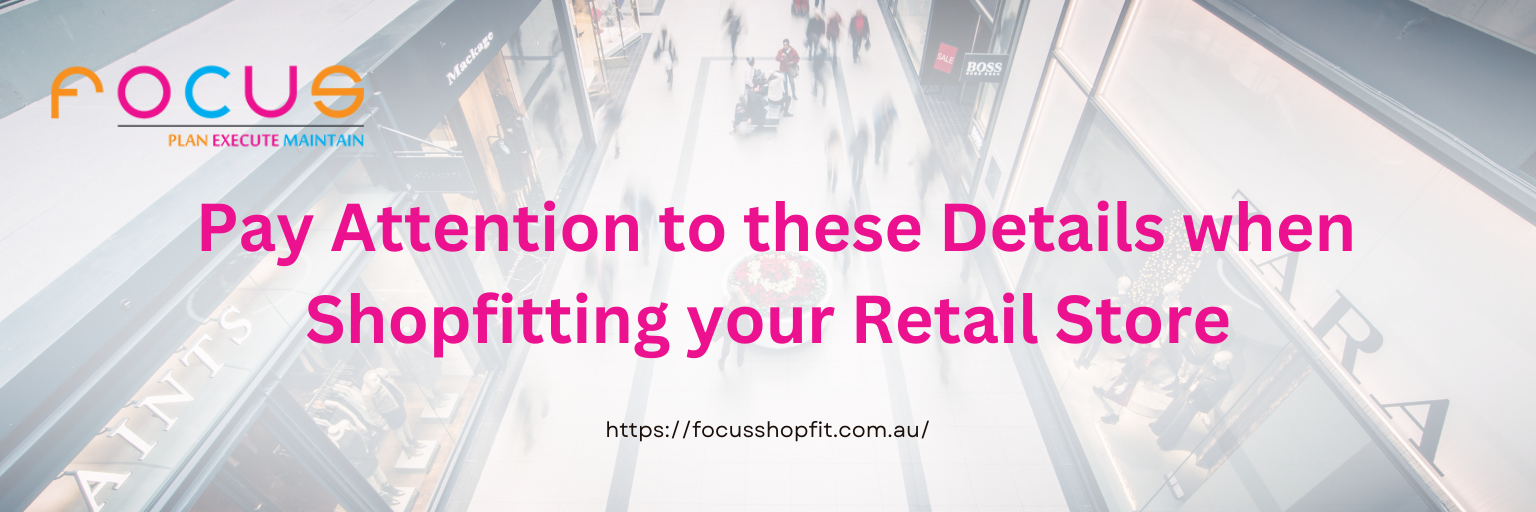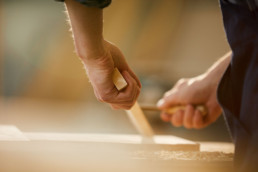Pay Attention to these Details when Shopfitting your Retail Store
High-performing retail stores don’t happen by accident. They are built using visual merchandising strategy, signage, store layout, design, and attention to details like sight, scent and sound.
These details, when chosen correctly, can be the elements that will improve a retail store’s sales and conversion. Read on to learn more about the details to pay attention to when shopfitting your retail store.

The Little Things Can Make an Impact on Store Buying Behavior
In-store sound or music doesn’t seem like something that most shoppers would focus on while they are in the store. It usually plays in the background and is not expected to be the focus for customers because they are busy shopping.
But music does go a long way toward creating a positive customer experience. It makes shopping easier and more pleasant. Some shoppers would even sing along or hum the music. Music has a deeper effect than just encouraging singing or humming. Music affects the mood and influences physical activity, which in turn increases or reduces the heart rate. It helps self-regulate feelings and emotions that can have an impact on buying behavior.
Retailers and shop owners can use music strategically, to encourage them to speed up or slow down. You can use slow tempo sounds or music in area of the shop where you want customers to relax and spend more time.
Matching the in-store music to the target audience is also crucial. Choose music that your target consumers would know and enjoy. If there’s a huge mismatch between the music and your target consumer, you could end up with annoyed shoppers who will likely not purchase anything and leave the store.
Scent can Impact Sales
Scent, like in-store music, is another element that’s in the background but can make a big difference. It can directly affect a shop’s profitability and sales. Human beings can distinguish more than 10,000 different scents. These scents, in turn, can trigger specific memories and reactions.
Certain smells are known to affect state of mind or mood. A light vanilla scent can be comforting and calming to many people. Lavender is believed to ease stress and reduce anxiety. Some ambient scents are believed to help people relax, feel great and tend to like the retail environment enough to browse, stay longer and shop more.
It’s important to not overdo this aspect. Scents have to be correctly incorporated into your retail environment and even up to your overall marketing efforts. There has to be a match between the scent and your target consumer. It also has to work with the overall design of the shop. If you’re new to this, consult scent marketing experts who can help you create a positive sensory experience that can help boost sales.

Pleasing Visuals when Shopfitting a Retail Store
Every visual element in the store has to be appealing and desirable to your target consumer. Create positive customer engagements and avoid evoking anything that could negatively affect your brand. If you don’t know that much yet about visual merchandising, here are a few questions that can help you use sight, scent, sound and lights to trigger customer engagement and attract potential and existing customers:
- Do you have a brand-specific scent at your store?
- Who is your target consumer?
- What scent would be appealing to this target consumer?
- What emotions do you want to evoke through the store scent?
- Do you have in-store music?
- If yes, what kind of music are playing in your shop?
- Who is your target customer and what music would be appealing to them?
- What ambiance do you want to create through your in-store music?
- Do the merchandise and visuals in your shop reflect your brand? Do they convey your business ideas?
The answers to these questions can help you plan for shopfitting. Renovating, redesigning and optimising elements in your shop is all about an overall vision that works toward the shopping experience your target customer seeks. Whether you are totally new to this or not, it always helps to consult professionals and experts who have been doing shopfitting for years.

Planning Shop Design and Layout
Planning shop design and layout planning? Focus Shopfit can help. Focus has been managing and executing retail and commercial shopfitting projects for decades. Our experience can help you bring your plan to the best possible outcome.
To learn more about shopfitting your retail store, visit our services page or contact us today!
Shop Fitting Guide: Planning Shop Design and Layout
The design and layout of a store can have a big impact and customers and, ultimately, the store’s bottom line. A store with a great design and layout creates positive customer experiences. Customers tend to keep going back to stores that look great and are well-designed. A shop that has a great design and layout is also a breeze to navigate, which is another positive customer experience. Thinking about making a shop fitting? Planning shop design and layout in NSW and Perth, Western Australia? Read on to learn more from our Shop Fitting Guide: Planning Shop Design and Layout.

Flow
The space inside the shop should flow. Customers should move from one area to the next with ease. If customers have to constantly double back on themselves, they can get annoyed and choose to visit other stores instead.
It’s important that the elements inside the shop are arranged in a practical way. People should be able to easily find what they need. The design and layout should also encourage them to browse products and even purchase other items.
To begin visualizing flow, think about the path that people take when they enter the shop. Can they easily find their way through the store? Is it easy to find products? Are they arranged in a way that makes sense (by section, promotions, etc.)? The better visualise the space, draw a floorplan.
Store Layout
Floorplan
A floor plan can help you visualise what items you can fit into the space and how you can create a great shopping experience.
Customers should feel comfortable walking around the shop, they should be able to find the items they need, while navigating a well-planned and aesthetically pleasing space.
So aside from the items to add, you should also consider the space between the items and sections. Aisles, for example, should have enough space to allow the free flow of customers, including those that are carrying huge shopping bags and shopping carts. There should be additional space around the register area for shoppers to queue.
To have a good idea on which items can fit into the space, measure the entire store area. After that, make a list of the fixed items that need to be included in planning the design. Fixed items include:
- windows
- doorways
- ceiling height
- fire alarms
- fire extinguishers

Planning Shop Design and Layout
Planning is half the battle. It allows you to resolve important issues such as materials and methodologies right away. It saves money, time and unnecessary stress. Here are some important items to consider when store design and layout:
Customers
Who are your target customers? What do they need? What would be attractive or appealing for them?
Think about your store’s current offers, promotions or ”specials” and the locations in the store that can produce the best results.
Design
After you decide that the goal is to design a space that looks, for example, industrial, you can then start listing the items that can help achieve this look. From this list, you can start narrowing down to the items that are cost effective and the must-haves. A space with an industrial design would typically have bare brick walls, wooden pallets and metal or copper pipes; you can then add items or find alternatives.
Branding
Brand identity helps you stand out from the competitors. Make it clear and consistent across all properties and assets, including the store.
Style
Are there styles or themes that should be included in the design?
Lighting
Lighting should meet functional requirements such as providing enough illumination so that customers can be comfortable in the store and also easily see the signages and products. Beyond the functional, lighting can be used to create an ambience for the entire store and highlight specific displays or products.
Signage
Signages can be hanging signs, neon signs, acrylic stands and more. Choose the signage that is consistent with the branding and the works with the overall design of the space.

Planning Shop Design and Layout
Thinking about making a shop fitting guide? Planning shop design and layout in NSW and Perth, Western Australia? Focus Shopfit can help.
Focus has been managing and executing commercial and retail shopfitting projects for decades.
We are confident that with our experience, we can help you bring your plan to the best possible outcome, saving you time and cost.
To learn more about planning shop design and layout visit our services page or contact us today!


